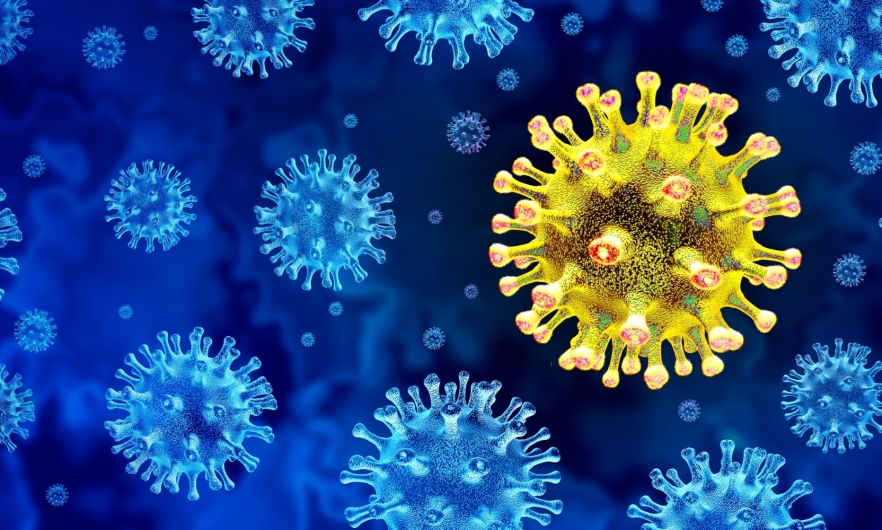
COVID-19
Overview
COVID-19 is the disease caused by a virus called SARS-CoV-2. It’s contagious and spreads quickly. There is no cure for COVID-19, which can cause long-term side effects. The best way to prevent severe COVID-19 or long-term consequences of the illness is to get the annual updated COVID-19 vaccine, which is recommended for everyone 6 months and older.
Spread (transmission)
COVID-19 spreads when an infected person breathes out droplets that contain small particles of the virus. When someone breathes in the droplets containing viral particles, or they land on the eyes, nose, or mouth, they can get infected.
Sometimes, droplets land on surfaces and contaminate them. If a person touches the contaminated surface, there’s a chance they can get the virus that way, as well. The virus that causes COVID-19 can stay on a surface for minutes up to several days.
Anyone infected with COVID-19 can spread it—even if they do not have symptoms of being sick.
Symptoms
People who get COVID-19 can have a wide range of symptoms, ranging from mild to severe.
Symptoms will appear anywhere from 2 to 14 days after exposure to the virus and may start as mild and progress.
Some of the more common symptoms include:
- Fever or chills
- Cough
- Shortness of breath or difficulty breathing
- Sore throat
- Congestion or runny nose
- New loss of taste or smell
- Fatigue
- Muscle or body aches
- Headache
- Nausea or vomiting
- Diarrhea
Signs of a COVID-19 medical emergency are:
- Trouble breathing
- Persistent pain or pressure in the chest
- New confusion
- Inability to wake or stay awake
- Depending on skin tone, lips, nail beds, and skin may appear pale, gray, or blue
Flu and COVID-19 have similar symptoms. See CDC’s Similarities and Differences Between Flu and COVID-19
There are tests to tell if you have COVID-19.
You can receive free at-home COVID-19 tests from HHS.gov.
Treatment
Medications are available to help treat COVID-19, but the treatments must be started within 5–7 days after you develop symptoms, or they will not be effective.
Treatments include oral antiviral pills that keep the COVID-19 virus from making copies of itself. These medications are Paxlovid and Lagevrio (molnupiravir). Additionally, there is an IV antiviral called Veklury that does the same as the previously mentioned medications except that it is given intravenously.
Who is at the highest risk for severe COVID-19?
The people who are most at risk of getting very sick if they get COVID-19 are people at advanced age, people with weakened immune systems (immunocompromised), and people with specific disabilities or underlying health conditions.
Long-term consequences
Some people, even those with minor or no symptoms, will develop post-COVID-19 conditions, otherwise known as “Long COVID.”
Long COVID is serious and can result in chronic conditions that can lead to disability. There are a wide range of ongoing symptoms and conditions that can last weeks—years after COVID-19 illness. This is something that can affect anyone, including children. The best way to prevent Long COVID is through vaccination. There are currently no answers or solutions for Long COVID other than to treat the symptoms that arise.
Variants
The COVID-19 virus can change over time, leading to new variants with new characteristics, including different/better ways of spreading and infecting.
CDC’s recommendations for COVID-19 vaccine changed on May 29, 2025
See COVID-19 vaccine recommendations.
